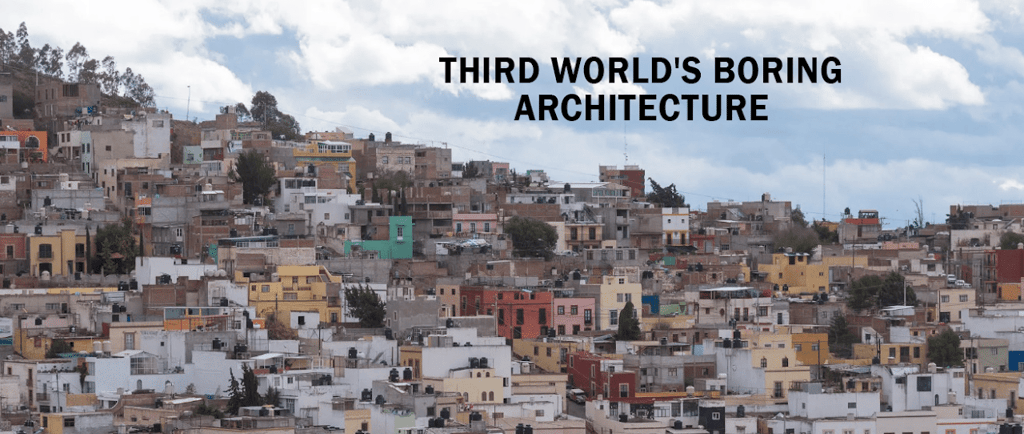THIRD WORLD'S BORING ARCHITECTURE


In Middle East and Asian third-world countries, the architectural landscape often reflects a basic need for shelter rather than a focus on order or aesthetic appeal. The absence of comprehensive urban planning and regulatory authorities overseeing urban development has led to a significant lack of organization in city planning, resulting in a myriad of individual buildings that are diverse and disparate from one another.
Furthermore, the prevalent use of low-grade materials, coupled with a limited availability of various building materials, contributes to an overall outdated and unsightly appearance of building facades. This not only impacts the visual appeal but also raises concerns about the structural integrity of these constructions.
The urgency of addressing these issues is evident. The implementation of a new and efficient urban planning system, along with the establishment of a dedicated municipality, holds the potential to swiftly reform the appearance of cities. This transformation can enhance the quality of life for inhabitants and attract positive attention from both residents and visitors.
In war-torn regions, the process of reconstructing buildings often involves hasty and careless construction methods, resulting in structures that appear odd and disparate. This chaotic approach not only affects the aesthetic coherence of the area but also poses potential safety risks.
A crucial step towards well-organized development lies in the implementation of legislation that restricts the involvement in developing areas to certified architects and city planners. By assigning the responsibility of planning to qualified professionals, there is a higher likelihood of creating cohesive and harmonious urban spaces that prioritize both functionality and aesthetics. This approach ensures that the development process is guided by expertise, contributing to a more sustainable and visually pleasing urban environment.
